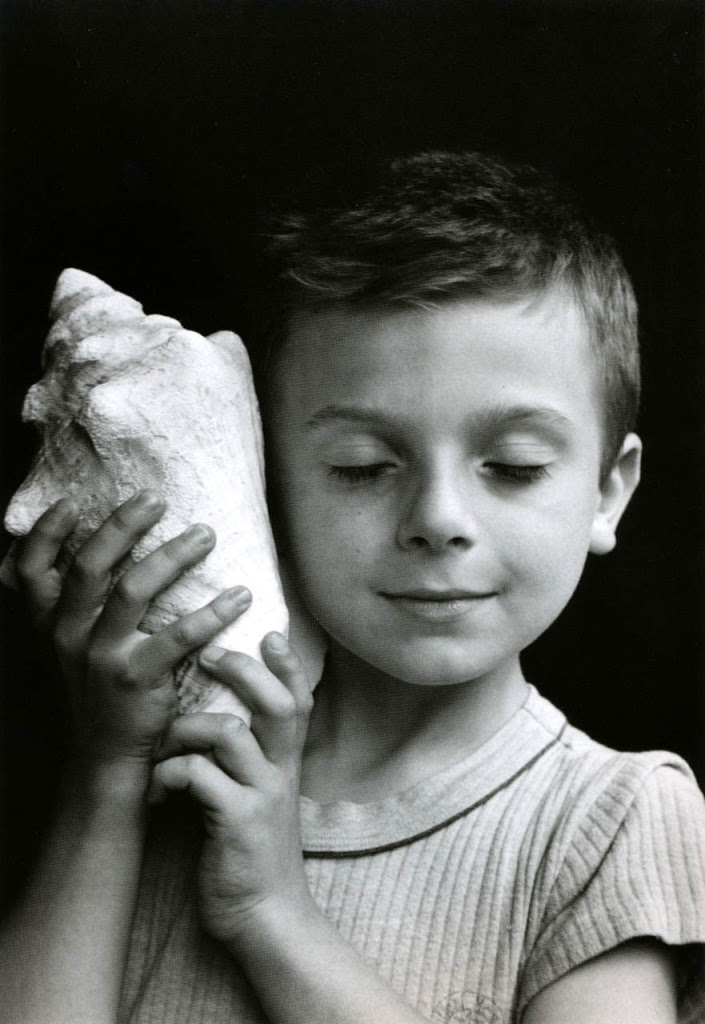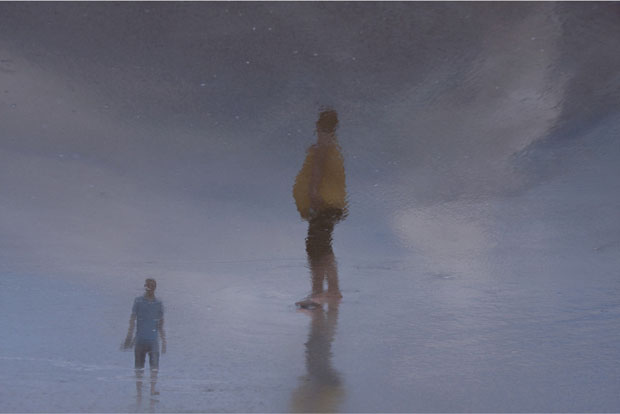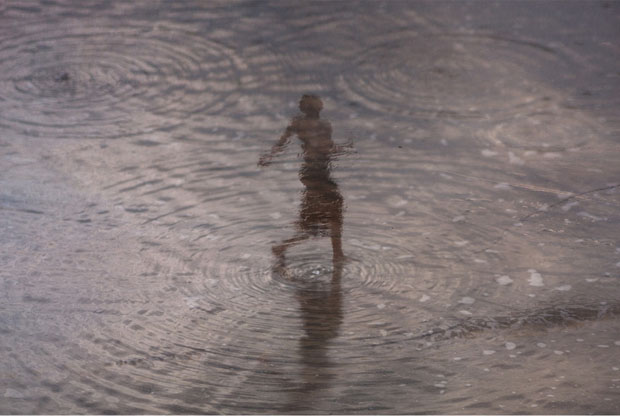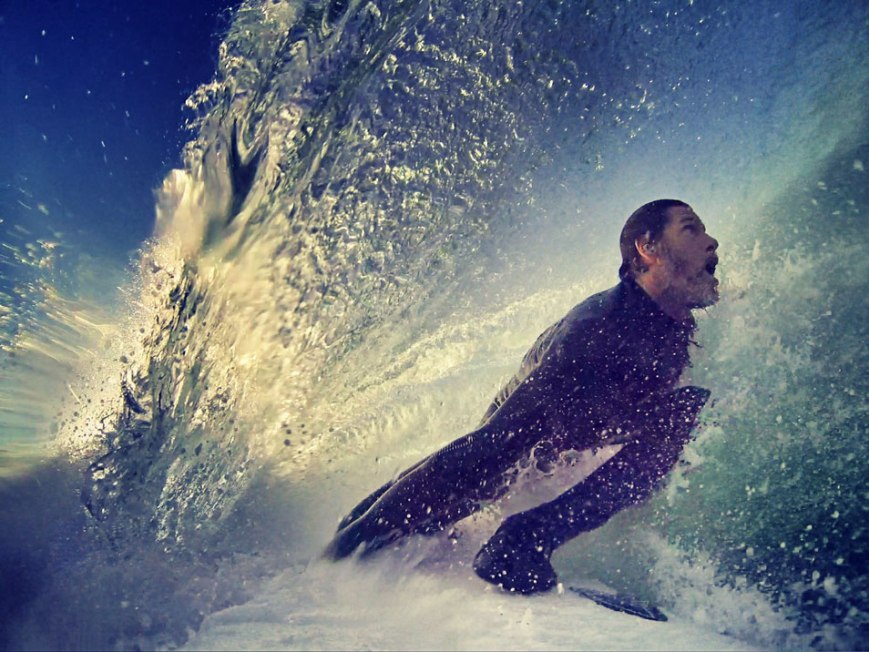
“Lo más importante es salir y ver las estrellas, no verlas en los libros.” – Edouard Boubat
//
The most important thing is to go out and see the stars, not to see them in the books.” – Edouard Boubat

“Lo más importante es salir y ver las estrellas, no verlas en los libros.” – Edouard Boubat
//
The most important thing is to go out and see the stars, not to see them in the books.” – Edouard Boubat

“Seascapes” es un extenso estudio sobre el océano y cómo las mareas suben y bajan y las olas rompen contra la orilla. Creadas por el fotógrafo residente en Helsinki, Antti Viitala, cada composición sigue la misma estructura, en la que los cielos cubiertos se mezclan con el azul profundo del agua junto a una línea de horizonte recta, que corta directamente el centro de la imagen.
Esta serie de doce imágenes captura las tormentas de otoño que ocurrieron mientras estaba en la playa de Camps Bay, cerca de Ciudad del Cabo, Sudáfrica. Viitala utiliza exposiciones largas para capturar el movimiento y las ricas texturas del agua y la arena, que se unen en escenas meditativas. Aunque hay muchas similitudes en toda la serie, ninguna fotografía es igual a las otras. A través de la obra, el artista invita al espectador a reflexionar sobre las fuerzas de la naturaleza y a conectar con la tranquila belleza de los paisajes.
//
“Seascapes” is an extensive study about the ocesan and how tides up and down and waves crash against the shore. Produced by the resident photographer in Helsinki, Antti Viitala, each composition follows the same structure, in which covered heavens mixed with deep blue water near a straight horizon line, which directly cuts the image center.
This series of twelve images captures autumn storms that happened while I was on the beach at Camps Bay, near Cape Town, South Africa. Viitala used long exposures to capture movement and rich textures of water and sand, that match in in meditative scenes. Although there hay many similarities in all series, no picture is equal to the other. Through the work, the artist invites the viewer to reflect on nature forces and to connect with the quiet beauty of landscapes.











(via: http://www.culturainquieta.com/es/fotografia/item/4386-olas-rompiendo-en-la-arena.html)

En junio pasado, la fotógrafa con sede en la ciudad de Nueva York Htet T San visitó varias playas alrededor de la Gran Manzana, principalmente en Coney Island y en la playa de Brighton. Su objetivo era captar el concepto de “la nada más absoluta” a través de los reflejos de los bañistas vistos en las arenas mojadas. Las imágenes resultantes forman una serie que ella llama “El segundo frágil”.
Cada una de las fotografías muestra una figura humana caminando, corriendo o jugando en la playa. Parecen ser reflejos, pero mira más cerca y verás que ni arriba ni abajo se muestra el mundo real.
Las imágenes son desorientadoras debido al hecho de que en realidad se mezclan imágenes compuestas creadas por apilamiento de múltiples imágenes.
//
Back in June, New York City-based photographer Htet T San visited a number of beaches around The Big Apple, mainly on Coney Island and at Brighton Beach. Her goal was to capture the concept of “the complete nothingness” through reflections of beachgoers seen in the wet sands. The resulting images form a series she calls “The Frail Second.”
Each of the photographs shows a human figure walking, running, or playing on the beach. They appear to be reflections, but look closer and you’ll see that neither up nor down shows the real world.
The images are disorienting due to the fact that they’re actually blended composite images created by stacking multiple images.









(via: http://petapixel.com/2013/09/20/beautiful-disorienting-photographs-reflections-sandy-beaches/)

La fotógrafa de paisaje y fauna Marina Cano tiene una fuerte afinidad por el mar. Con sede en el norte de España, la determinada fotógrafa no tiene miedo a aventurarse en una tormenta con el fin de captar la gran energía y pasión de su mundo circundante.
En la serie, titulada Mar, Cano crea una yuxtaposición entre la naturaleza y los objetos hechos por el hombre, estrechándose en un faro que se consume por la abrumadora fuerza del océano. A través de su estudio del único edificio, Cano ha creado una serie fascinante que lleva a los espectadores en un emocionante viaje visual.
La aislada construcción se sitúa en contraste directo con las olas y las imágenes transmiten el poder de fascinación de la naturaleza. Al eliminar el color, la artista invita a sus espectadores a explorar las formas, texturas y energía que llenan las composiciones mientras el mar choca, salpica, y se eleva hasta alrededor del faro en inusuales formas.
//
Landscape and wildlife photographer Marina Cano has a strong affinity for the sea. Based in the north of Spain, the determined photographer isn’t afraid to venture out into stormy weather in order to capture the great energy and passion of her surrounding world.
In the series, entitled Sea, Cano creates a juxtaposition between nature and man-made objects, narrowing in on a lighthouse as it becomes consumed by the overwhelming strength of the ocean. Through her study of the single building, Cano created a captivating series that takes viewers on an exciting visual journey.
The isolated construction sits in direct contrast to the crashing waves and the images convey the captivating power of nature. By eliminating color, the artist invites her viewers to explore the shapes, textures, and energy that fill the compositions as the sea water crashes, splashes, and rises up around the lighthouse in unusual forms.




(via: http://www.mymodernmet.com/profiles/blogs/marina-cano-sea)

El impresionante proyecto fotográfico “Beautiful Whale” por el fotógrafo y conservacionista Bryant Austin es el primero de su clase: narra sus intentos valientes para acercarse a las ballenas como compañeros seres sensibles. Con imágenes íntimas de Austin – algunas tan detalladas como un único ojo inquietante – que resultan de encuentros basados en la confianza mutua, esta obra captura la gracia y la inteligencia de estas magníficas criaturas. Austin pasó días sumergido, inmóvil, en las aguas de las remotas zonas de desove esperando jorobadas, esperma, y ballenas minke que le buscan.
Como oceanógrafa, Sylvia A. Earle dice en su prólogo del libro “Como embajador del océano – y al océano – Bryant Austin no sólo es una fuente de inspiración. Él es motivo de esperanza.”
//
Photographer and conservationist Bryant Austin’s breathtaking photographic project Beautiful Whale is the first of its kind: chronicles his fearless attempts to reach out to whales as fellow sentient beings. Featuring Austin’s intimate images–some as detailed as a single haunting eye–that result from encounters based on mutual trust, this work captures the grace and intelligence of these magnificent creatures. Austin spent days at a time submerged, motionless, in the waters of remote spawning grounds waiting for humpback, sperm, and minke whales to seek him out.
As oceanographer Sylvia A. Earle says in her foreword to the book, “As an ambassador from the ocean – and to the ocean – Bryant Austin is not only a source of inspiration. He is cause for hope.”
(via: http://bookpassage.com/)








Steven Lippman tomó estos autorretratos utilizando la cámara GoPro Hero3 Negro Edition. Navegar con una cámara adheroda al brazo o a la tabla lleva requiere tiempo para acostumbrarse. Todo depende de la preferencia personal de qué tipo de ángulo quieras… GoPro ha hecho un gran trabajo al hacer la cámara pequeña, ligera y versátil.
Lippman ama practicar surf en Malibú durante el invierno, pero también le gusta viajar y navegar en zonas remotas de Indonesia. “El mejor momento (para surfear) es cuando todos los elementos se unen – viento, dirección del oleaje y la marea.” Puedes seguir sus aventuras en Instagram: @stevenlippman.
//
Steven Lippman shot these self-portraits using the GoPro Hero3 Black Edition. Surfing with a camera attached to your arm or board takes some getting used to. It’s all about personal preference on what type of angle you want… GoPro has done a really great job of making the camera small, lightweight and versatile.
Lippman loves to surf in Malibu during the winter, but also enjoys traveling and surfing in remote parts of Indonesia. “The best time (to surf) is when all the elements come together – wind, swell direction and tide.” Follow his adventures on Instagram: @stevenlippman.
(via: http://pdnphotooftheday.com/)





Richard Misrach, uno de los maestros más prolíficos de la actualidad contemporánea, es reconocido internacionalmente por sus cuidadosamente consideradas, bellas obras épicas. En On the Beach, una costosa elaboración monografica de gran tamaño que cuenta con la largamente esperada publicación de esta serie espectacular, Misrach profundiza en nuestra delicada relación con el mar. Luz, color y forma son componentes cruciales en las exploraciones Misrach sobre temas difíciles. En este trabajo utiliza una paleta preciosa, cambiando poco a poco de color obtenidos de cambios en la profundidad y la marea, patrones abstractos de olas y agua ondulante, y las playas vacías y tanto desordenadas. A lo largo de la serie, Misrach equilibra delicadamente entre las minucias del gesto humano con la escala masiva de la mar. En algunas imágenes, una figura solitaria flotando en un campo de líquido de color turquesa brillante – o en otros, se encuentra varado y parcialmente enterrada. Los detalles en las imágenes son con frecuencia ambiguos. Como Misrach dice, el trabajo está “impregnado de un sentido de lo sublime, pero también comienza a exponer nuestra vulnerabilidad y fragilidad como seres humanos.”
//
Richard Misrach, one of today’s most prolific contemporary masters, is internationally renowned for his carefully considered, beautifully rendered epic works. In On the Beach, a lavishly produced, oversized monograph that features the long-awaited publication of this spectacular series, Misrach hones in on our delicate relationship to the sea. Light, color, and form are crucial components in Misrach’s explorations of difficult subjects. In this body of work he uses a gorgeous, slowly shifting color palette gleaned from changes in depth and tide; abstract patterns of waves and rippling water, and beaches both empty and cluttered. Throughout the series, Misrach carefully balances the minutiae of human gesture against the massive scale of the sea. In some images, a lone figure floats in a liquid field of brilliant turquoise–or in others, lies beached and partially buried. The details in the images are frequently ambiguous. As Misrach says, the work is “suffused with a sense of the sublime, but it also begins to expose our vulnerability and fragility as human beings.”












Entre 1984 y 1998, Jean Gaumy, un reportero gráfico francés, fue a la mar cuatro veces en los arrastreros de cubierta abierta. Él guardó una especie de libro de registro de cada viaje, y tomó fotografías. Gaumy no es un hombre de mar, pero a pesar del mareo constante, el miedo y el dolor físico, se sintió atraído por los barcos y la vida de los hombres a bordo con una fascinación visceral.
Sus notas garabateadas son reproducidas aquí, un registro claro de los terribles días y noches en alta mar, en condiciones duras por encima de la cubierta y debajo: “Un enorme papel en el que nos tocó de todo … me deslicé hacia abajo. Protegía mi cámara pero me alcanzó un perno en la fuerza de cierre contra mi caja torácica. Un accidente muy malo.
“Come, oblígate a comer. La mesa es muy pequeña, llena de placas de grasa, los huesos por todas partes, latas de cerveza, café instantáneo, vino blanco, vino tinto, y las colillas de cigarrillo empapado nadando en vasos de estaño. Y todo se está moviendo. Guiso grasiento, vino ácido. te obligas a tragar … ”
Pero son las fotografías en blanco y negro de Gaumy, las que forman el grueso de este libro de gran formato, que merece la pena el precio de haber sentido náuseas. En ninguna parte he visto un retrato sombrío, bastante menos, o mejor de la vida en el mar. Una vida que acerca de la que nadie puede sentirse estático, de la desesperación, el peligro sucio, terrible. Esto es lo que muchos de los pescadores ven, una verdad brutal vivida en las horas crepusculares, en el borde de tejido de la destrucción.
Ellos probablemente están hablando, incluso bromeando, mientras que a un pie de distancia el mar rabia, y la espuma soplada por los vientos de tormenta vuela desde las crestas de las olas. ¿Quién podría hacer este trabajo? ¿Quién iría a la mar en estos barcos durante 40 días seguidos, trabajando 18 horas al día, para ganar a veces no más que un salario para subsistir?
(via: http://www.guardian.co.uk)
//
Between 1984 and 1998, Jean Gaumy, a French photojournalist, went to sea four times on open-deck trawlers. He kept a sort of logbook of each voyage, and took photographs. Gaumy is not a natural seaman; but despite constant seasickness, fear, and physical pain, he was drawn to the boats and the life of the men aboard out of a visceral fascination.
His scrawled notes are reproduced here, a plain record of harrowing days and nights at sea, braving conditions above deck and below: “A huge roll knocked us all around… I slide down a long way. Protect my camera but hit a bolt on the bulkhead full force with my rib cage. A really bad crash.
“Eat, force yourself to eat. The table is too small, crowded with oily plates, bones everywhere, beer cans, instant coffee, white wine, red wine, and soaked cigarette butts swimming in tin cups. And everything is moving. Greasy stew, acidic wine. You force yourself to swallow…”
But it’s Gaumy’s black-and-white photographs, which form the bulk of this large-format book, that are worth the queasy price of admission. Nowhere have I seen a grimmer, less pretty, or better portrayal of life at sea. A life no one could be rhapsodic about; of desperate, filthy, terrifying danger. This is what a fisherman’s lot looks like, a brutal truth lived out in the crepuscular hours, at the weaving edge of obliteration.
They’re probably talking, even joking, while a foot away the sea rages, and spume blown by storm winds flies from the wavetops. Who would do such work? Who would go out to sea in such boats for 40 days at a time, work 18 hours a day, to earn sometimes no more than a subsistence wage?






